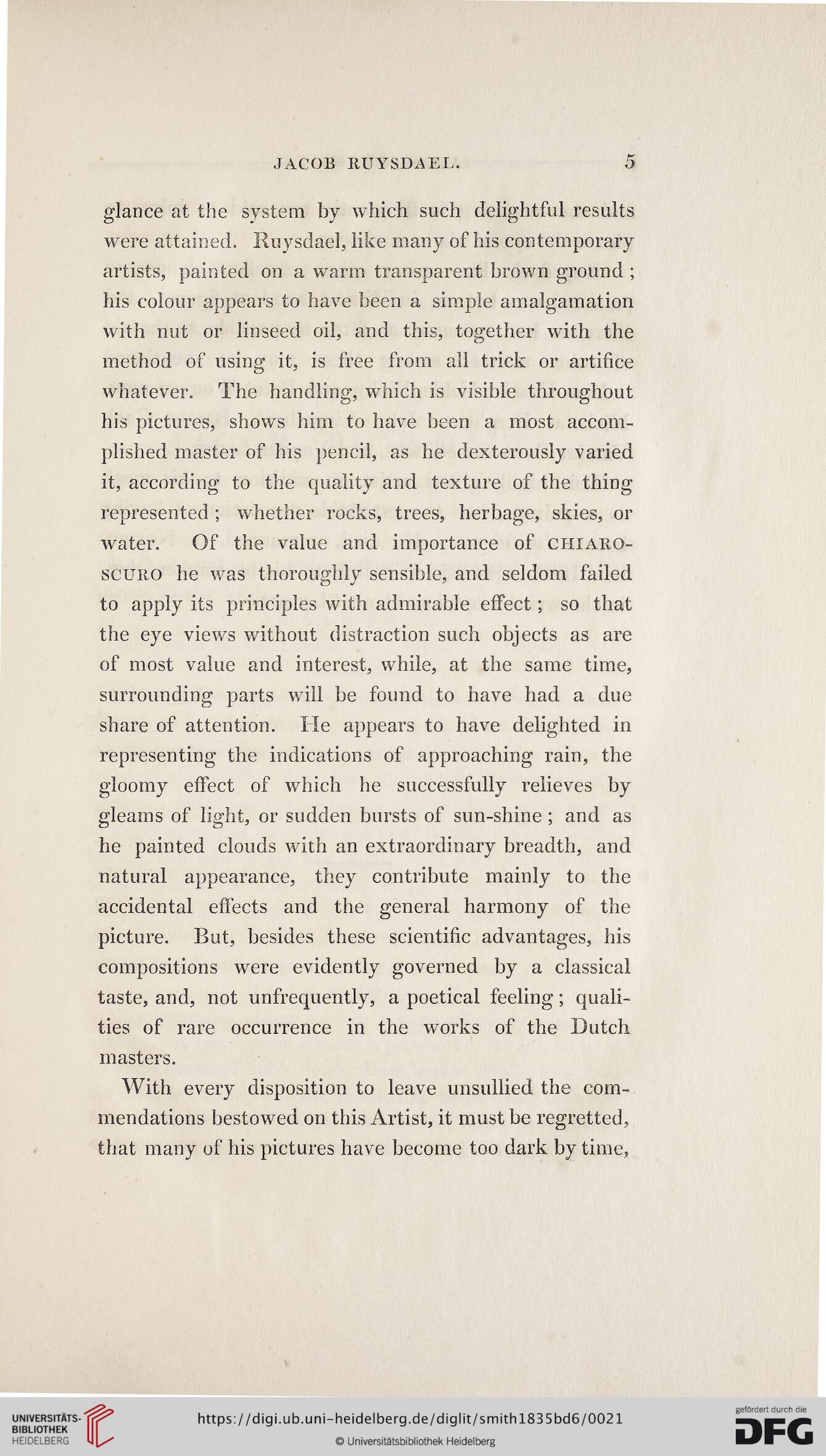JACOB RUYSDAEL.
5
glance at the system by which such delightful results
were attained. Ruysdael, like many of his contemporary
artists, painted on a warm transparent brown ground ;
his colour appears to have been a simple amalgamation
with nut or linseed oil, and this, together with the
method os using it, is free from all trick or artifice
whatever. The handling, which is visible throughout
his pictures, shows him to have been a most accom-
plished master of his pencil, as he dexterously varied
it, according to the quality and texture of the thing
represented ; whether rocks, trees, herbage, skies, or
water. Of the value and importance of chiaro-
scuro he was thoroughly sensible, and seldom failed
to apply its principles with admirable effect; so that
the eye views without distraction such objects as are
of most value and interest, while, at the same time,
surrounding parts will be found to have had a due
share of attention. He appears to have delighted in
representing the indications of approaching rain, the
gloomy effect of which he successfully relieves by
gleams of light, or sudden bursts of sun-shine ; and as
he painted clouds with an extraordinary breadth, and
natural appearance, they contribute mainly to the
accidental effects and the general harmony of the
picture. But, besides these scientific advantages, his
compositions were evidently governed by a classical
taste, and, not unfrequently, a poetical feeling; quali-
ties of rare occurrence in the works of the Dutch
masters.
With every disposition to leave unsullied the com-
mendations bestowed on this Artist, it must be regretted,
that many of his pictures have become too dark by time,
5
glance at the system by which such delightful results
were attained. Ruysdael, like many of his contemporary
artists, painted on a warm transparent brown ground ;
his colour appears to have been a simple amalgamation
with nut or linseed oil, and this, together with the
method os using it, is free from all trick or artifice
whatever. The handling, which is visible throughout
his pictures, shows him to have been a most accom-
plished master of his pencil, as he dexterously varied
it, according to the quality and texture of the thing
represented ; whether rocks, trees, herbage, skies, or
water. Of the value and importance of chiaro-
scuro he was thoroughly sensible, and seldom failed
to apply its principles with admirable effect; so that
the eye views without distraction such objects as are
of most value and interest, while, at the same time,
surrounding parts will be found to have had a due
share of attention. He appears to have delighted in
representing the indications of approaching rain, the
gloomy effect of which he successfully relieves by
gleams of light, or sudden bursts of sun-shine ; and as
he painted clouds with an extraordinary breadth, and
natural appearance, they contribute mainly to the
accidental effects and the general harmony of the
picture. But, besides these scientific advantages, his
compositions were evidently governed by a classical
taste, and, not unfrequently, a poetical feeling; quali-
ties of rare occurrence in the works of the Dutch
masters.
With every disposition to leave unsullied the com-
mendations bestowed on this Artist, it must be regretted,
that many of his pictures have become too dark by time,




